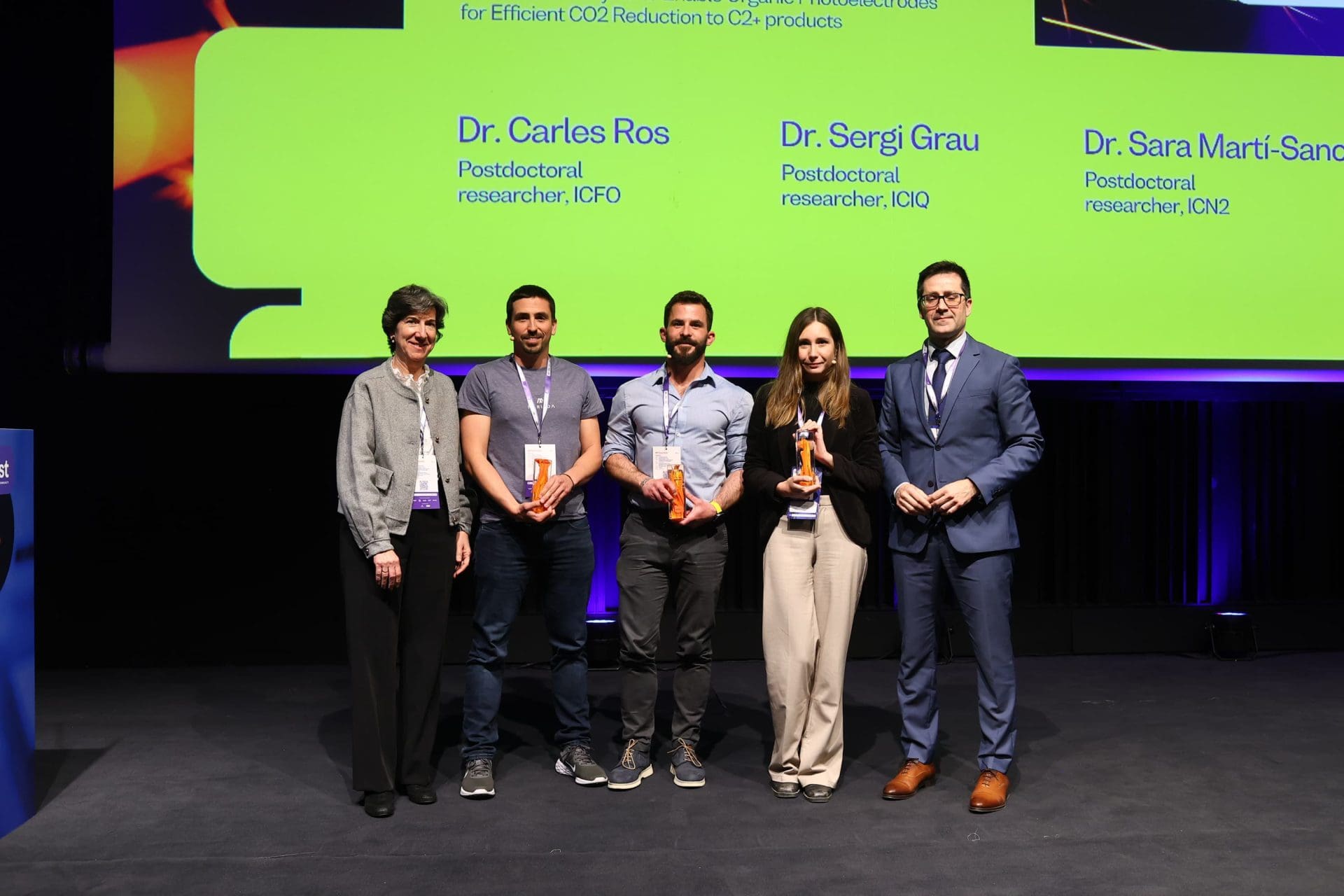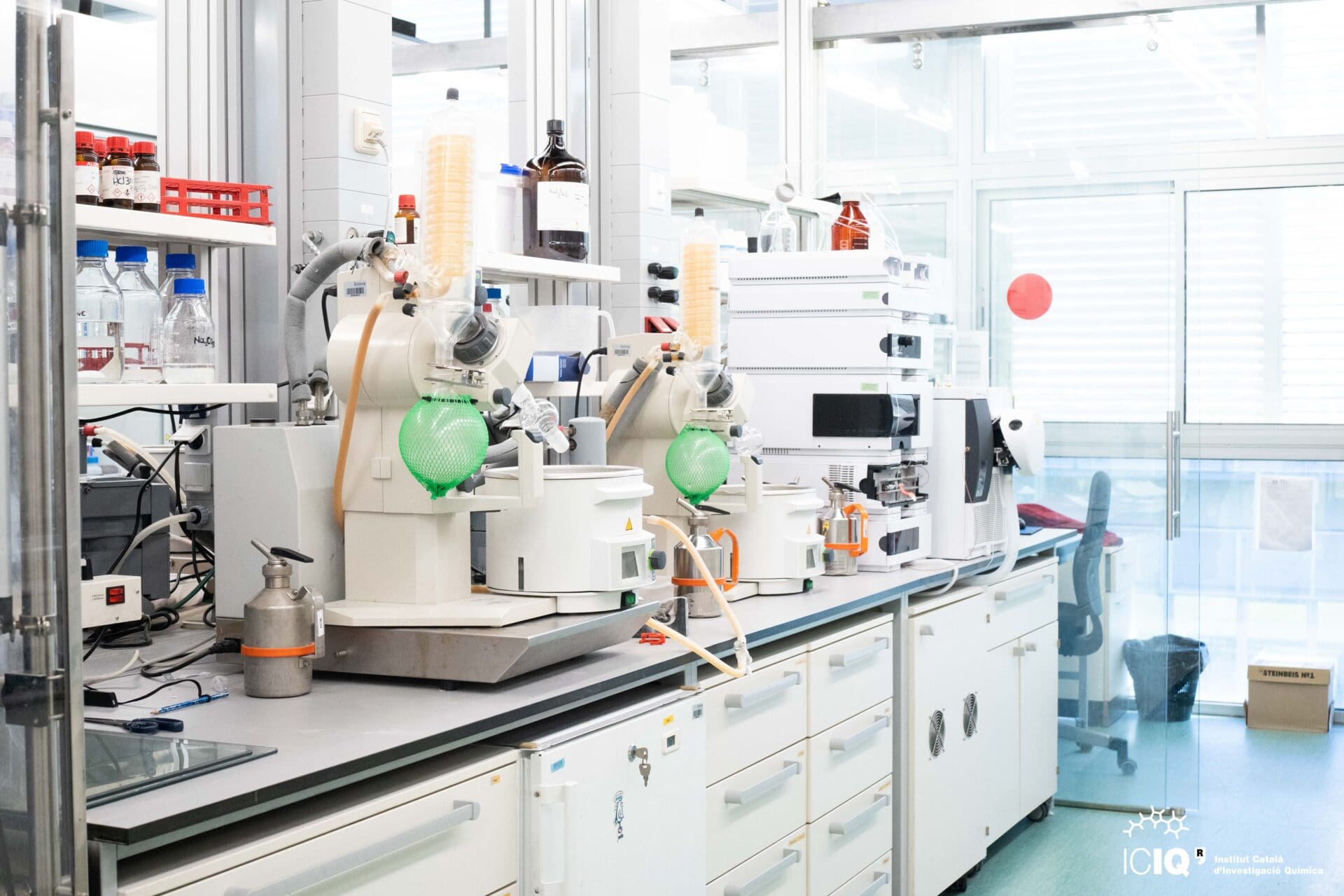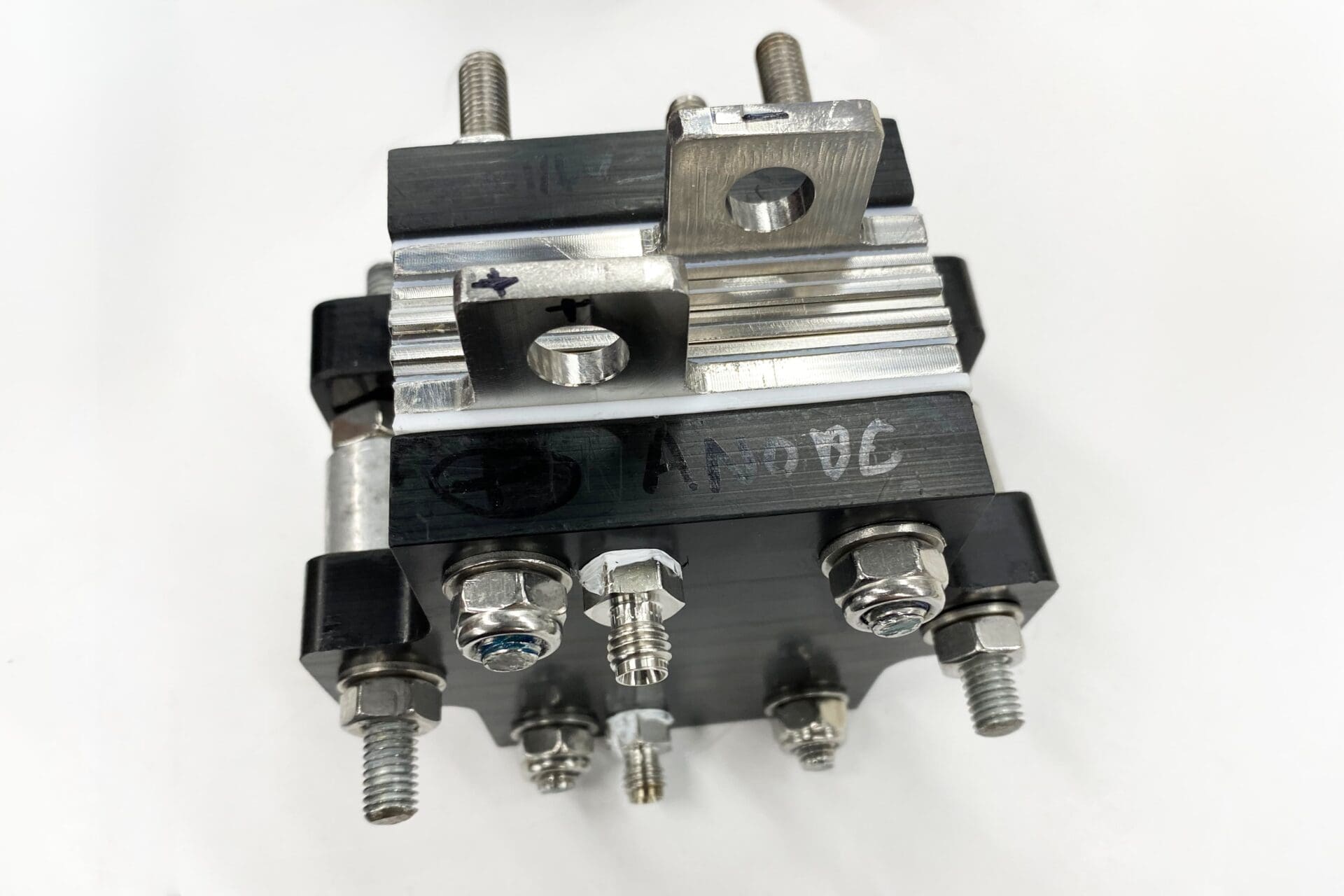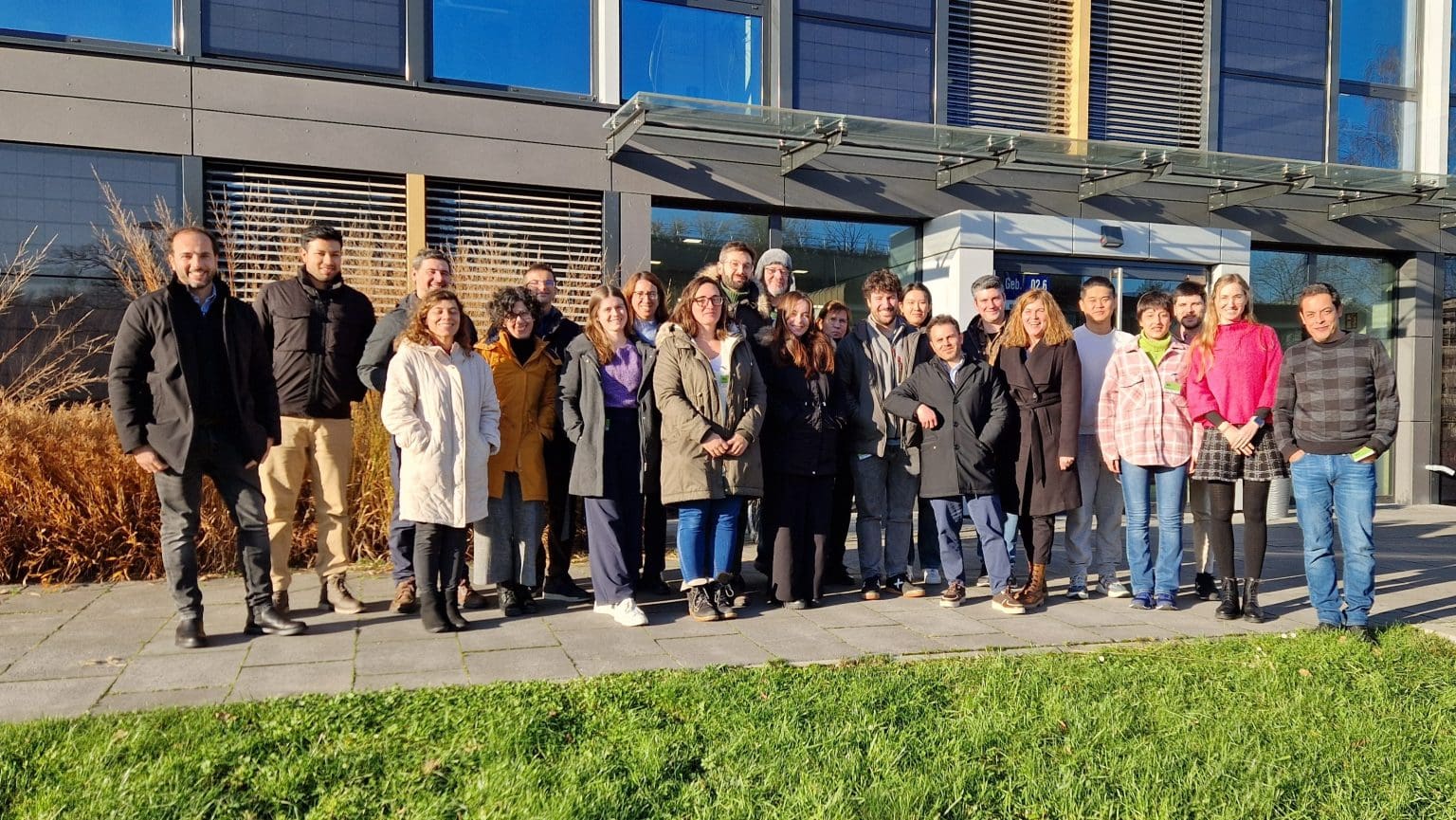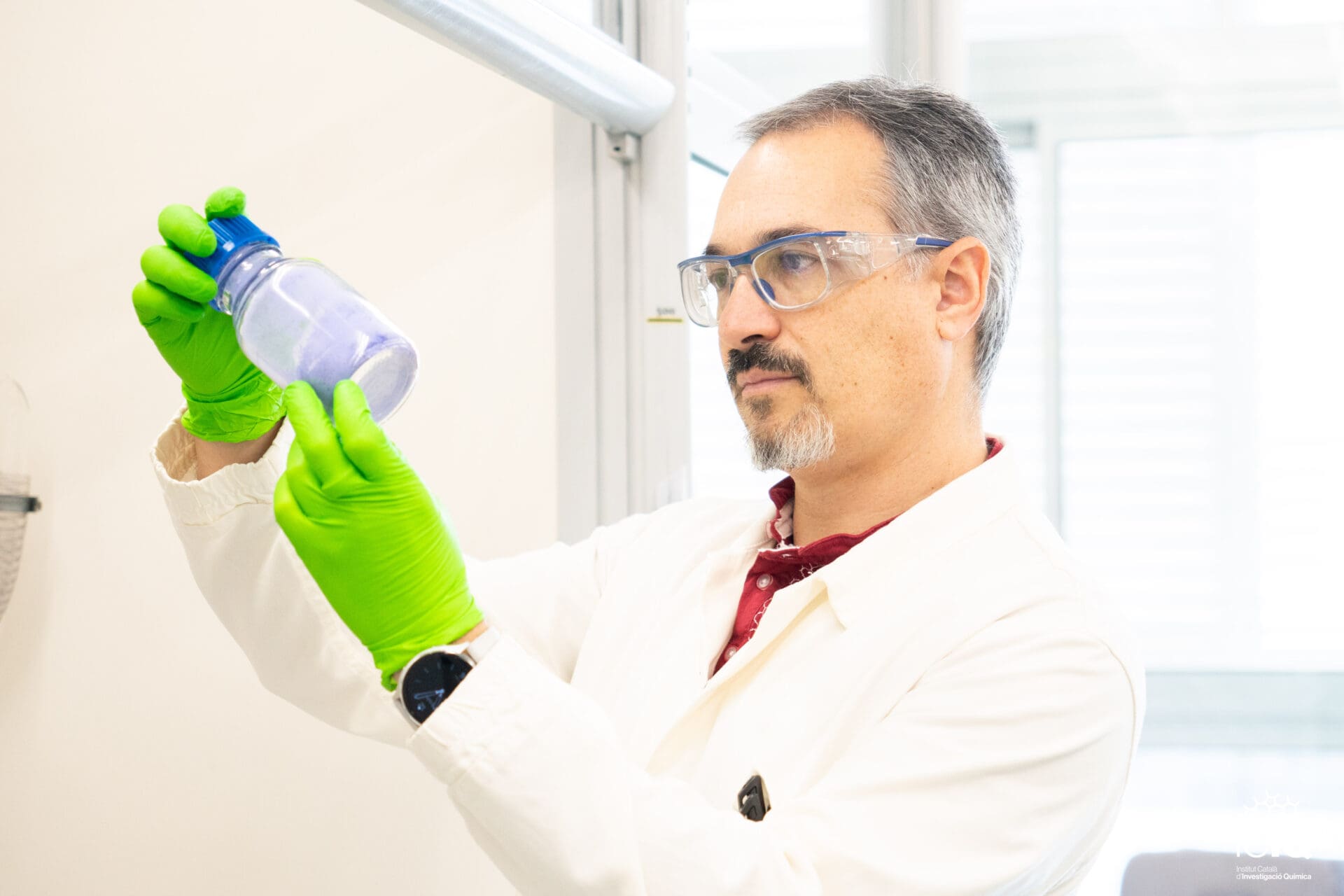ICIQ researchers develop efficient light-driven system for CO₂ conversion under continuous flow
New organic photocatalysts show promise for producing high-value fuels from waste CO₂ in gas-phase conditions
11th April 2025 – In a remarkable example of multidisciplinary collaboration, scientists have unveiled a novel strategy to convert carbon dioxide (CO₂) into valuable products using visible light under continuous flow conditions. The results of this research stems from the combined efforts of several research groups at ICIQ, led by Prof. Katherine Villa, Prof. Feliu Maseras, and Prof. J. R. Galán-Mascarós, alongside Dr. Albert Solé-Daura (Junior Leader “la Caixa” at ICIQ), and researchers from the Institute of Photonic Sciences (ICFO), the Catalonia Institute for Energy Research (IREC), and the University of Chemistry and Technology of Prague (Czech Republic). The findings have been published in ACS Catalysis.
The team developed self-assembled nanostructures from EDOT-based conjugated trimers, which serve as efficient photocatalysts in gas-phase CO₂ reduction. By carefully tuning the molecular design—specifically the acceptor core units within donor–acceptor–donor (D-A-D) structures—the researchers enhanced both activity and selectivity, with ethane (C₂H₆) emerging as a major product. Copper-based nanoparticles were also integrated as cocatalysts, further promoting the selective formation of C₂+ compounds by facilitating carbon–carbon coupling reactions.
“Our results show that thoughtful photocatalyst design enables selective CO₂ conversion under realistic conditions,” said Prof. Villa. “By operating in gas phase and under visible light, they move us closer to practical applications in CO2 valorisation.”
The system consistently produced ethane, methane (CH₄), and carbon monoxide (CO), demonstrating strong potential for sustainable, value-added fuel generation. Both experimental observations and theoretical modelling confirmed that molecular-level control significantly impacts reaction efficiency by reducing energy barriers and improving intermediate adsorption.
While liquid-phase CO₂ conversion has been widely studied, gas-phase systems remain less explored despite offering advantages like improved diffusion and easier product separation. The use of organic semiconductors—known for their tunable properties, stability, and environmental compatibility—positions this work at the forefront of emerging strategies in photocatalysis.
Reference article
Gas-Phase Photocatalytic CO2 Reduction to Ethane via EDOT-Based Trimers
Yuan, X.; Solé-Daura, A.; Li, C.; Díaz-Ruiz, M.; Liguori, N.; Biset-Peiró, M.; Murcia-López, S.; Luxa, J.; Sofer, Z.; Galán-Mascarós, J. R.; Maseras, F.; Villa, K.
ACS Catal. 2025, 15, 6186–6198
DOI: 10.1021/acscatal.4c07788
Related news

Let's create a brighter future
Join our team to work with renowned researchers, tackle groundbreaking
projects and contribute to meaningful scientific advancements
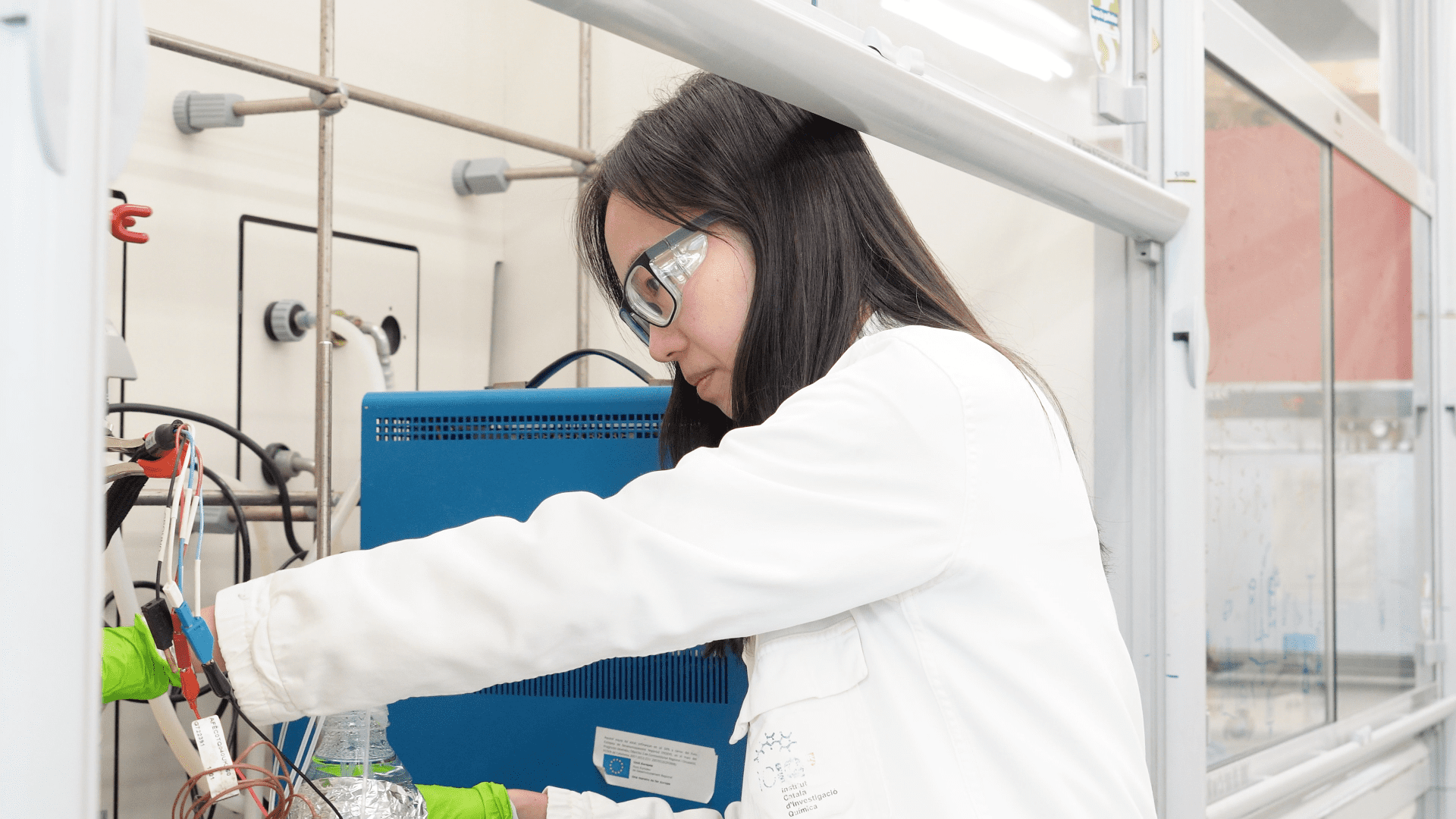






 15-04-2025
15-04-2025 